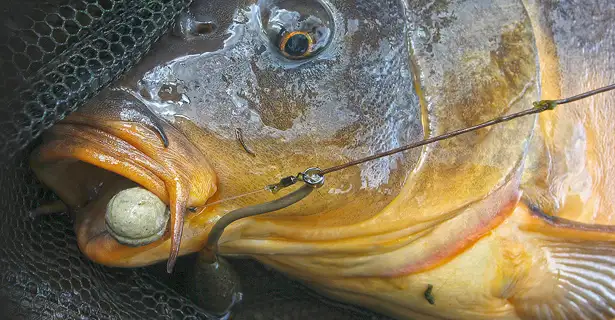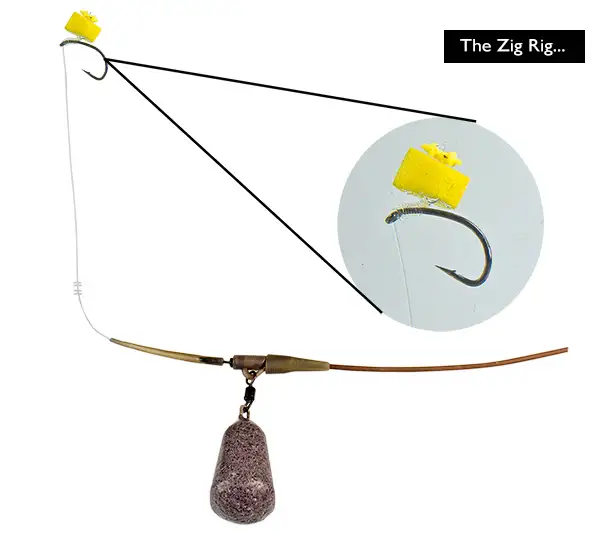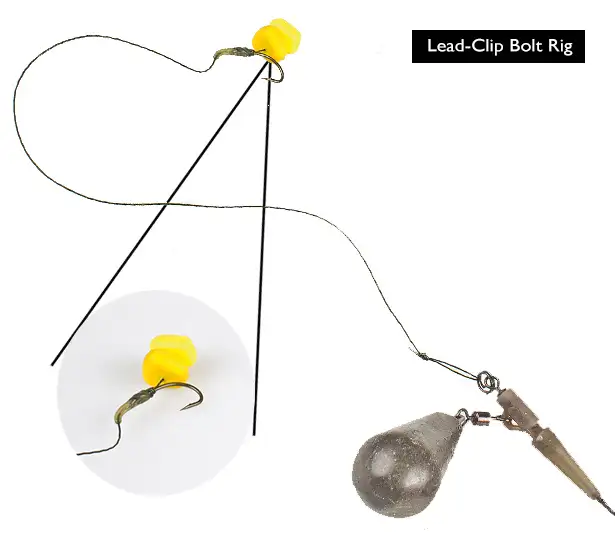This is a demo store. No orders will be fulfilled.
Carp Rigs 101


Carp Rigs 101 - Alan Stagg There are loads of carp rigs that have developed over the years, but there are certainly three that you need to have in your head to help you get more carp on the bank. We turned to the big-fish knowledge of Gardner Tackle’s Alan Stagg to find out more.
Since the evolution of modern Carp Fishing began way back in the last century, anglers have devised and developed evermore elaborate rigs to fool ever-more clever fish. Some have come and gone, others are so complicated you need a PhD in design and knot tying to build then, but there are three that every aspiring big-fish catcher should know and use. It’s not just being able to assemble these rigs that will help you, though, but more importantly knowing when to put them into the water. Here we get the lowdown on the three rigs that form the bedrock of a competent carp angler’s career, from big fish supremo and Coarse Fishing Answers expert Alan Stagg – this man knows a thing or two about tripping up specimens, so listen up.
Zig Rig Throughout the year carp spend a lot of time away from the lake bed, either sunbathing or searching out midwater sources of natural food. They will happily feast on insects like Caddis, Mayflies or Daphnia, with these invertebrates making up a large proportion of the carp’s natural diet. On heavily stocked waters the fish even feed on freebies as they fall through the water, with some !sh having learnt that baits eaten midwater rarely have a hook attached to them and so are a safer bet to eat. The key to fishing a Zig is working out when the carp are feeding up in the water. When the telltale bubbling and bottom activity of feeding carp stops, or when surface activity increases it normally indicates that the main feeding period down on the lake bed has come to an end. This is the time to switch your attentions to fishing with zigs.
Whether the zig is fished with a really long hook link so that the hook bait remains on or near the surface when the fish are up high in the water, or with a shorter link so that the bait is suspended straight up off a lead, the method can be phenomenally affective at picking off fish that you simply wouldn’t catch on bottom baits.
On waters that respond well to floating baits, a change from conventional "floater controller tactics to long-tail zigs fished among freebies can make a massive difference as the !sh are unable to cope with the change in presentation. If the fish in your venue react positively to the sound of a spod landing in the water, it can be worth making a sloppy cloudy mix and spodding this over the zig rigs using a Pocket Rocket or Bait Shuttle. The fish come into the area excited by the spod landing and the cloud of food particles suspended in the water, and will often take a midwater bait as soon as they see it. This method can lead to multiple catches and some fast and furious action.
Whatever type of venue you’re targeting, your hook link and hook need to be as small and light as possible – balanced against the size of fish you’re likely to encounter and the presence of snags. This is simply because the fish are normally eyeball to eyeball with the hook and hook bait, so naturally keeping everything small and neat will be advantageous.
In keeping with this scaling down, smaller hook baits will also normally be more effective than large ones, so rather than sticking on a 16mm boilie it’s worth using a trimmed-down pop-up boilie (trimmed as small as necessary to lift the hook and hook link) or better still, a tiny piece of ultra-buoyant Gardner Zig Rig foam. This foam is available in a wide range of colours, which is really useful as you will often !nd that on difficult days a change of hook-bait colour can lead to a quick bite. It’s important that the hook bait is mounted tight to the hook shank on a really short hair. That way you are certain that when a !sh mouths the bait, the hook will always be in the perfect position to nail the fish.
When Should I Use It? Warmer water conditions or when there’s a hatch of natural food, although the zig can work at any time on heavily stocked waters.
A zig-rig bait needs to replicate either natural food or introduced bait that’s sitting up in the water column. Foam is a great option due to its buoyancy and the fact that it’s available in so many different colours. Use as light and small a hook as you can get away with as the Carp will get more of a look at the bait when it’s up in their eye line. The length of your zig rig is based on where in the water column you think the carp are feeding, which can be from a foot above the lead right up to the surface. A light and low-viz hook link is needed to offer little resistance to the bait and not show up in the water.
An anti-tangle sleeve ahead of the lead clip over the connecting swivel cuts down on tangles. A zig rig is fished on a standard lead clip arrangement, with the lead providing the anchor point for the buoyant bait and also a weight to deliver a bolt effect to the rig. A length of rig tubing behind the lead clip will reduce the chance of tangling as it keeps the monofilament in line.
Buy The Rig Bits Used To Construct This Rig

Chod Rig The ‘classic’ chod rig is tied using a specialist high-memory hook-link material, such as TripWire,which enables a curve to be set into the hook link section of the rig so it will always aggressively twist, regardless of the direction the fish approaches the hook bait – meaning more and better hooked fish. With the hook bait mounted on a ‘D’ on the back of the hook the rig becomes extremely hard for fish to deal with. Why?
Well, the pivot point stops the hook from turning when the fish tries to eject it and keeps the hook point facing towards the fish’s bottom lip. Combined with the curved hook section and a free-turning swivel the result is phenomenal. The short Chod-rig hook link is mounted on to a small flexi-ring swivel that runs up and down an extended helicopter rig – moving freely up to a point set by the positioning of a small piece of 0.5mm silicone tubing and Covert Safety bead on the leadcore leader during the cast. As the lead flies through the air, and then drops through the water, the chod rig stays up near the top bead and the hook bait settles gently down over any weed and leaves so the hook bait remains clearly visible to fish feeding in the area.
This distance from the lead up to the top Chod Rig bead is critical, and adjusted depending on how scruffy the lake bed is where you’re fishing. In light debris and low weed the stop can be as little as 12 inches from the lead, but if the weed is several feet deep the bead should be right at the top of a long Plummet leader. If in doubt, fish the top bead further away from the lead.
To get the most out of the chod rig you need to be careful how you set your bobbins. Always try to keep the line relatively slack, otherwise any added tension may pull the hook link down into the debris. Bites with a chod rig will often start out looking like a violent, twitchy liner, as the fish hooks itself against the weight of the line and the Plummet leader acting against the anchor point of the lead. If the bobbin stays tight to the buzzer there’s normally a fish on the end.
When Should I Use It? If the lake bed is predominantly covered in weed, leaves or algae consider using the chod rig as the presentation will be much better and you can get your hook bait in position with fewer casts. This is especially important if you are casting at showing fish.
The chod pops up over the bottom detritus. Gardner offers chods and helicopter rigs ready tied. Stiff line should be used to create a chod rig to get a bend on the hook link that’s hard for carp to reject. The lead arrangement is basically a helicopter rig where the weight sits at the end of the main line and the hook link rotates around it. The bait on a chod holds off the back of a D-shape of line on the back of the hook. The top bead is adjustable so you can change the distance between the bait. The hook link and the lead. runs via a ring on a swivel so that the hook link can move backwards on the cast.
Buy The Rig Bits Used To Construct This Rig

Lead-Clip Bolt Rig
Hugely popular, lead clips are used by many anglers mainly because of the ability to swap leads in the blink of an eye. The ribs on the lead-clip arm combined with how far the tail rubber is pushed on allow the angler to control the force required to discharge the lead – how hard you pull on the line against how easily the lead drops o# the clip leaving you with a straight, unencumbered line to the fish.
Thanks to the ability to change lead size and shape, lead-clip systems can be used on almost any type of lake bed. By lengthening the hook link you can still maintain good presentation over light weed or silt, and on hard spots using a "at pear bomb will maximise the resistance, getting the most from your bolt rig.
I’m a big fan of uncoated braid in the right situation. It offers unsurpassed limpness that is said to give the hook bait a freedom of movement that can fool !sh into thinking the bait is a freebie. Whether it is this effect, or Lead-clip Bolt Rig simply that the supple nature of these materials feels different to monofilaments on the fish’s lip, or that the hook is free to twist uninhibited and take hold more effectively in the fish’s mouth is really uncertain. It’s probably a mix of all these attributes that makes braid so effective.
The perfect hook-link braid should sink "flush to the lake bed, be smooth to the touch and ultra-limp, have a low diameter and be nicely camouflaged against a number of lake beds. The subtlety that braids o#er make them an extraordinarily effective hook-link option, and are the number-one choice for many anglers, especially when !shing with solid-PVA bags or small hook baits.
Hook choice is very much a personal thing; however, I favour a wide-gaped, beaked-point pattern when using this rig. The increased gape offers the benefit of increased hooking power by allowing the hook point to be set further away from the hook eye, and the hook to grip deeper and even more strongly. My preferred hook bait when using this rig is two pieces of imitation corn from EnterpriseTackle (one sinking and one buoyant), which negates the weight of the hook, or a whittled-down boilie hook bait. Combine this with a small micro-mesh or solid-PVA bag and watch those bobbins fly.
When Should I Use It? The lead-clip bolt rig is a general-purpose rig you can use in most situations but it works best when you’ve got a clear swim where you want to present a bottom or poppedup bait. They’re brilliant for commercial venues when used with a PVA bag of feed.
A great presentation of bait on the leadclip bolt rig is a slightly poppedup arrangement. The use of a quick-change Q ring after the lead-clip swivel will help you change hook links a lot more efficiently. The shape of lead you use on your rig will be determined by the bottom make-up of the swim you’re targeting.
You can use coated or uncoated braid for the hook link, but the best presentation comes from uncoated as it will sit flush on the bottom.
A lead clip is designed to hold the lead in place but drop it when there’s force pulling from the hook and the rod end.
Buy The Rig Bits Used To Construct This Rig
